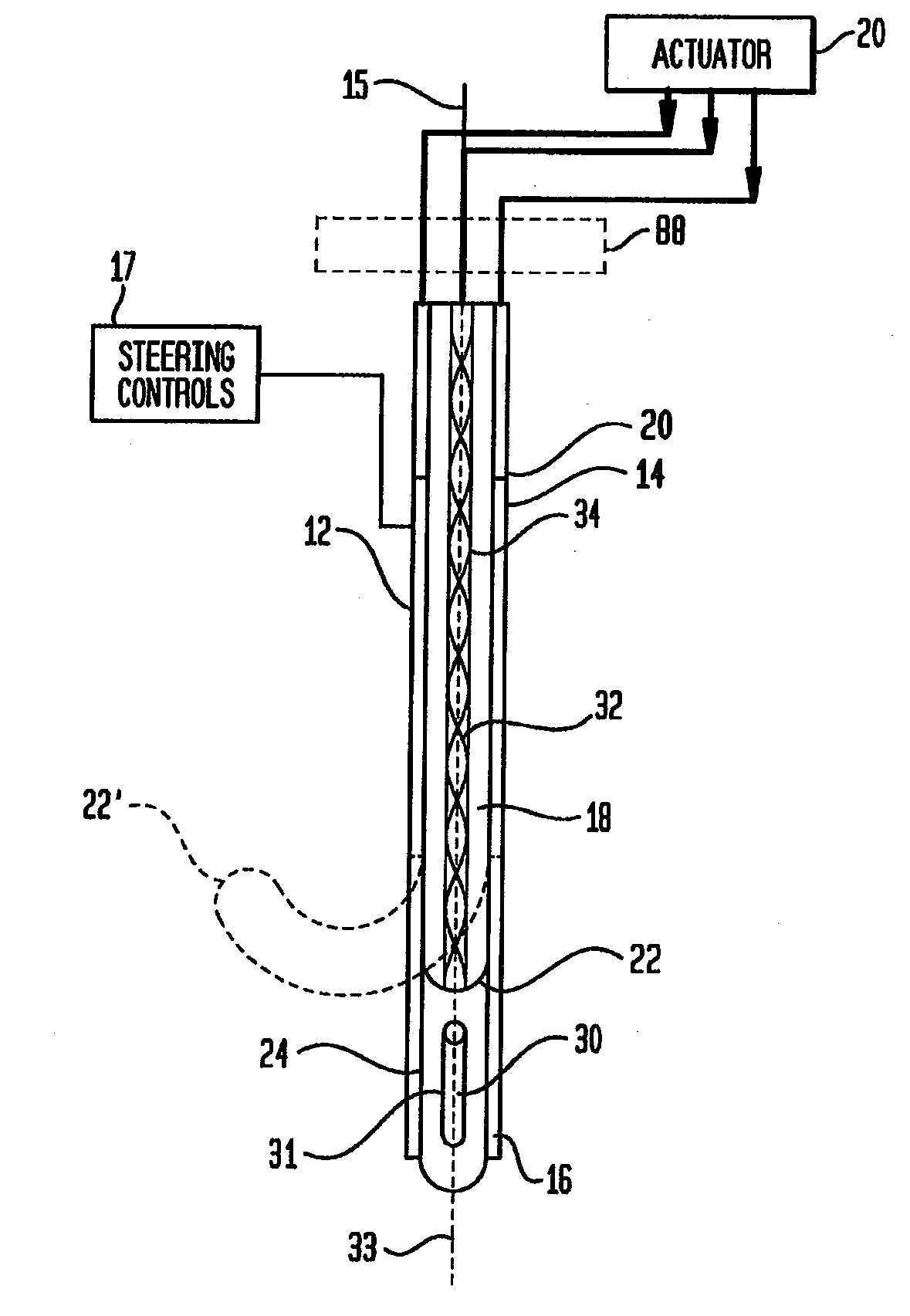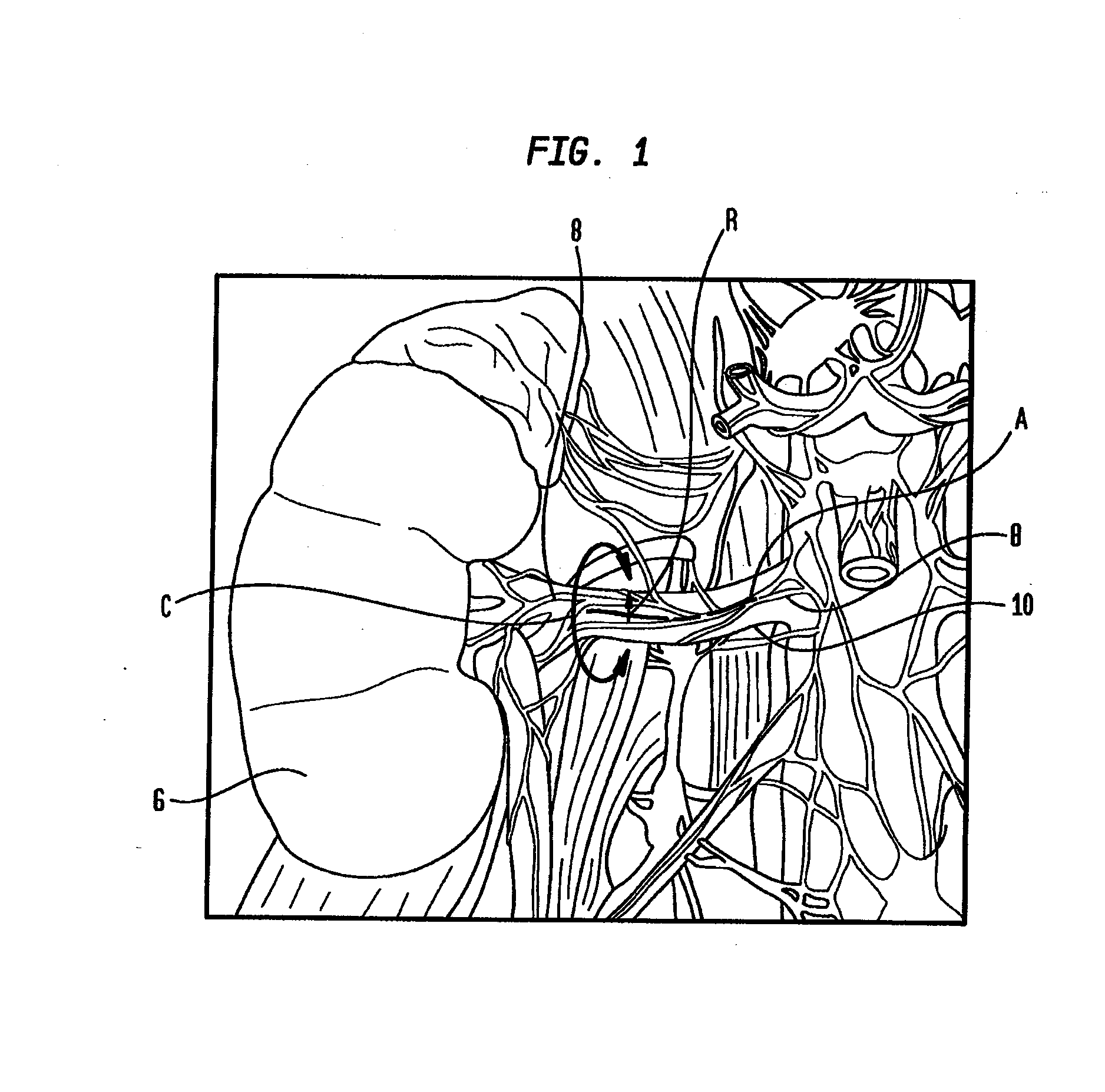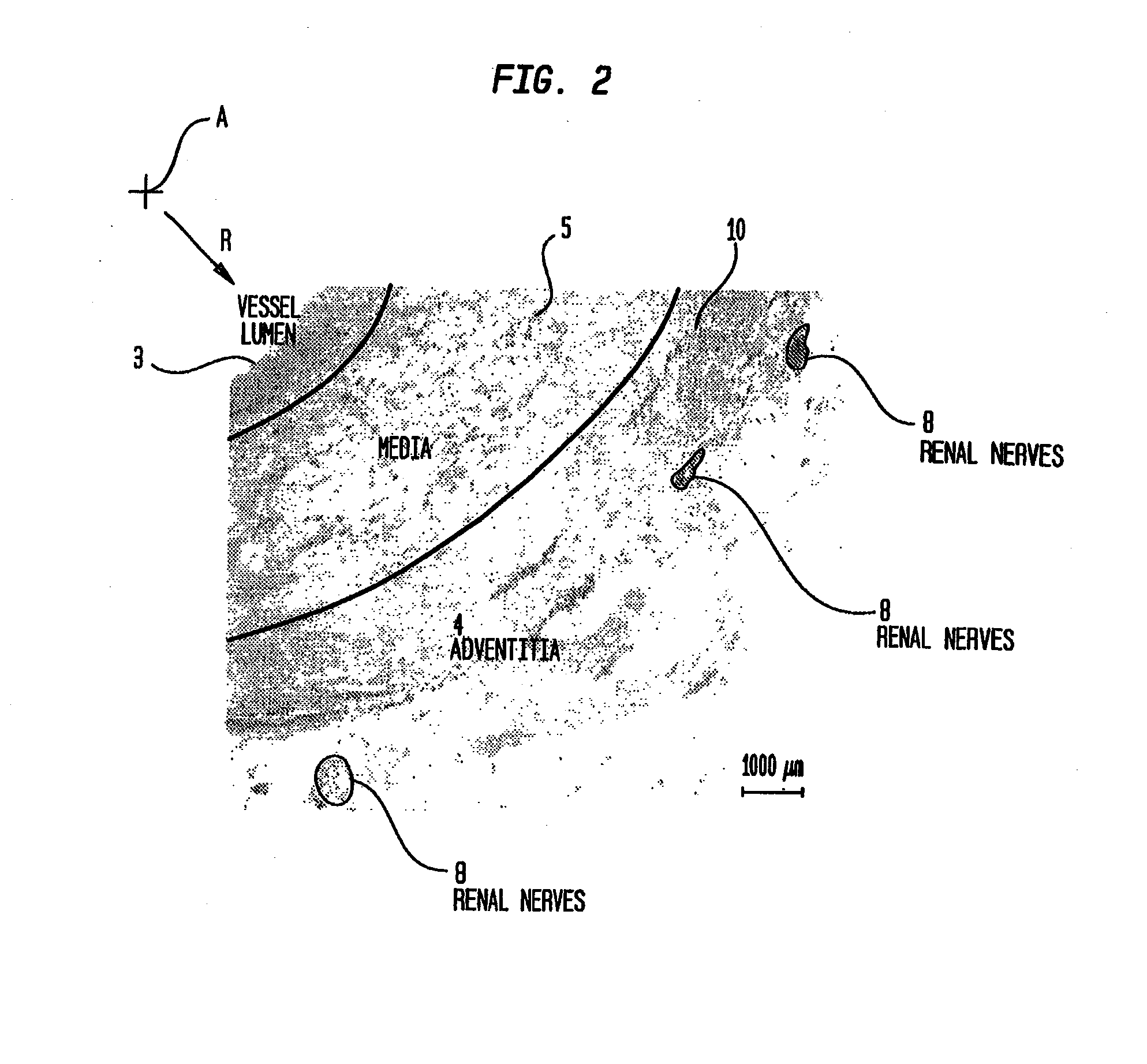Method and Apparatus for Treatment of Hypertension Through Percutaneous Ultrasound Renal Denervation
a technology of percutaneous ultrasound and kidney denervation, which is applied in the field of methods and equipment for treating hypertension through percutaneous ultrasound renal denervation, can solve the problems of drug therapy, not always successful, and people's resistance to drug therapy treatment, and achieve the effect of reducing the possibility of nerve recovery
- Summary
- Abstract
- Description
- Claims
- Application Information
AI Technical Summary
Benefits of technology
Problems solved by technology
Method used
Image
Examples
Embodiment Construction
[0025]Apparatus according to one embodiment of the invention (FIG. 3) includes a sheath 12. The sheath 12 generally may be in the form of an elongated tube having a proximal end 14, a distal end 16 and a proximal-to-distal axis 15. As used in this disclosure with reference to elongated elements for insertion into the body, the term “distal” refers to the end which is inserted into the body first, i.e., the leading end during advancement of the element into the body, whereas the term “proximal” refers to the opposite end. The sheath 12 may be a steerable sheath. Thus, the sheath may include known elements such as one or more pull wires (not shown) extending between the proximal and distal ends of the sheath and connected to a steering control 17 arranged so that actuation of the steering control by the operator flexes the distal end 16 of the sheath in a direction transverse to the axis 15.
[0026]The apparatus also includes a catheter 18 having a proximal end 20, a distal end 22 and a...
PUM
 Login to View More
Login to View More Abstract
Description
Claims
Application Information
 Login to View More
Login to View More - R&D
- Intellectual Property
- Life Sciences
- Materials
- Tech Scout
- Unparalleled Data Quality
- Higher Quality Content
- 60% Fewer Hallucinations
Browse by: Latest US Patents, China's latest patents, Technical Efficacy Thesaurus, Application Domain, Technology Topic, Popular Technical Reports.
© 2025 PatSnap. All rights reserved.Legal|Privacy policy|Modern Slavery Act Transparency Statement|Sitemap|About US| Contact US: help@patsnap.com



